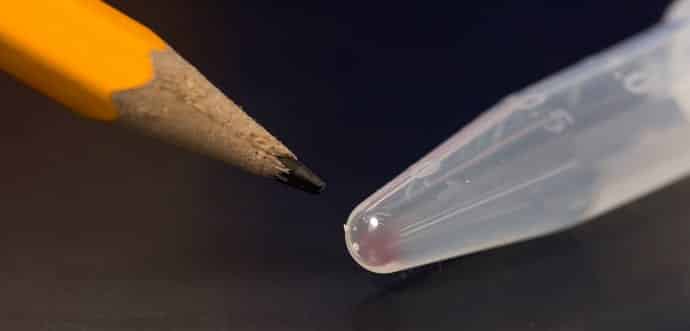Researchers find a method to store digital images in DNA and retrieve them easily
Researchers from the University of Washington and Microsoft are developing one of the first complete systems to store digital data in DNA, with the random-access readability and error correction protocols that would be required for real-world applications. In this new study, the researchers used a new method that can actually shrink the space needed to store digital data.
Luis Ceze, one of the researchers, explains in a press release:
“Life has produced this fantastic molecule called DNA that efficiently stores all kinds of information about your genes and how a living system works — it’s very, very compact and very durable. We’re essentially repurposing it to store digital data — pictures, videos, documents — in a manageable way for hundreds or thousands of years.”
In this case, the researchers developed an approach to convert zeroes and ones that make up a digital file using the four basic building blocks of DNA – adenine, guanine, cytosine and thymine. The “letters” of DNA code — adenine, thymine, cytosine and guanine, or A-T-C-G — stood in for the 1’s and 0’s of a computer’s binary code. They were also able to reverse this process to retrieve the correct sequences from a larger pool of DNA and reconstruct the images without losing any data.
That’s done using Huffman coding, a fairly normal approach for lossless data compression. You can read more detail about it in the researchers’ paper.

“How you go from ones and zeroes to As, Gs, Cs, and Ts really matters because if you use a smart approach, you can make it very dense and you don’t get a lot of errors,” said Georg Seelig, co-author of the new study. “If you do it wrong, you get a lot of mistakes.”
The researchers in this case can axe the digital data into pieces and then store it by producing a massive amount of tiny DNA molecules, which can then be dehydrated and preserved for long-term storage.
Ceze and his team has shown that they can successfully encode and then retrieve them, but they suggest that they can go much further, storing video, audio and any other kind of digital file. In a press release, they claim that it could be possible to “shrink the space needed to store digital data that today would fill a Walmart supercenter down to the size of a sugar cube.”
The findings could be huge when it comes to storing vast amounts of information for the future. This is especially important as the amount of information increases over time.
The study was presented at this year’s ACM International Conference on Architectural Support for Programming Languages and Operating Systems or ASPLOS.
